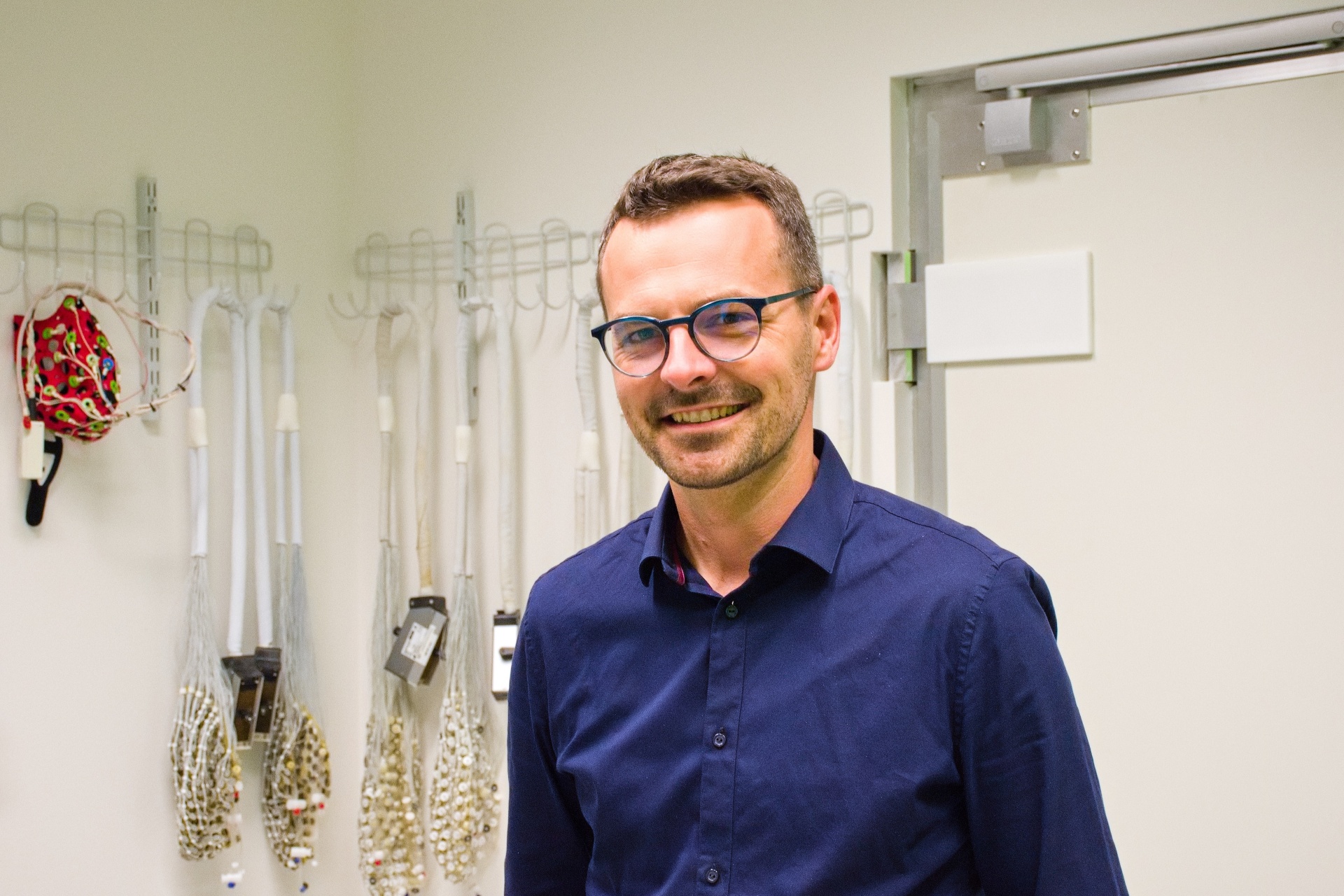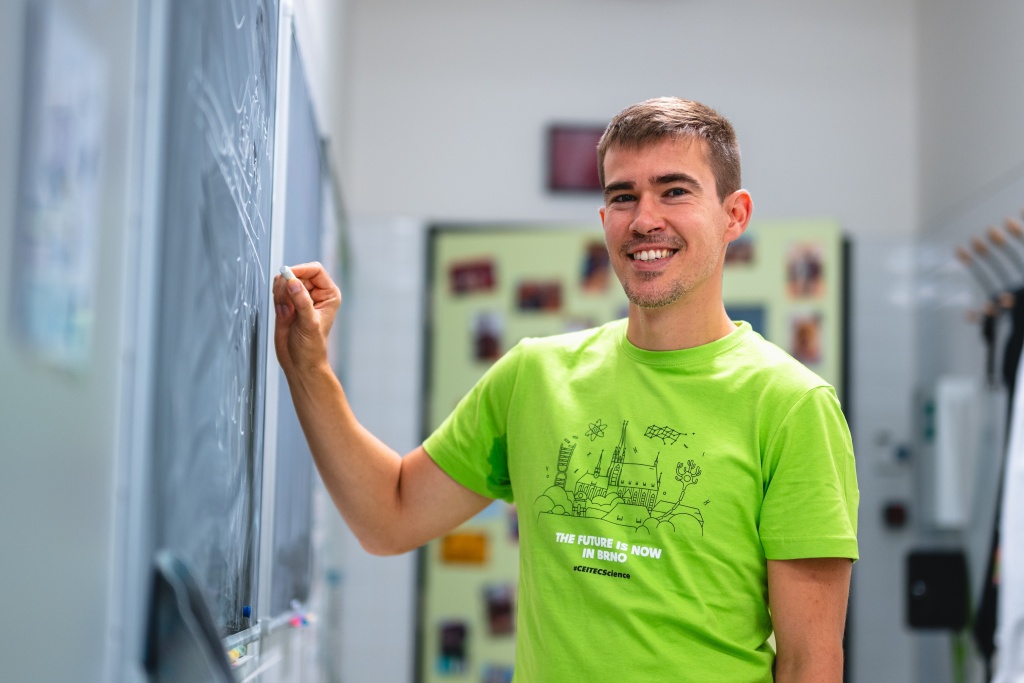20. října 2025
This interview is aimed at postdoctoral researchers from around the world who are considering their next career step. CEITEC in Brno offers the opportunity to combine ambitious science, cutting-edge technology, and an inspiring community. But even if you simply love scientific discovery, keep reading – CEITEC will capture your attention and won’t let go.
CEITEC is a place where scientists from all over the world meet across disciplines and push the boundaries of knowledge together. The institute brings together six partners and offers postdocs top-class facilities, an international environment, and real opportunities for career growth. Thanks to its open shared laboratories (core facilities), strong grant support, and friendly community, even early-career researchers can take part in projects with real impact – from fundamental research to clinical applications.
Young scientific talents at CEITEC have access to state-of-the-art technologies, mentoring, and a European network of partners in the life sciences. Most importantly, our research teams are constantly looking for talented postdocs! Would you like to join an international environment, work with world-class technologies, and live in a city considered the innovation heart of the Czech Republic? Explore current funding opportunities at our carrier website.
One example of how CEITEC’s interdisciplinary environment works in practice is the collaboration between Martin Lamoš from CEITEC Masaryk University (MUNI) and Eric Glowacki from CEITEC Brno University of Technology (BUT). Two scientists, two perspectives – clinical and technical – and one goal: to better understand the brain and bring relief to patients with neurological disorders.

While Martin’s team focuses on deep brain stimulation (DBS) to help patients with Parkinson’s disease, Eric and his colleagues are developing methods that use high-frequency electric fields to affect brain structures. By combining clinical and engineering expertise, they are creating unique research that bridges experimental medicine with modern technology and opens new therapeutic possibilities.
This interdisciplinary project is based on the idea that the brain can be modulated not only through surgical intervention but also non-invasively – without opening the skull. The researchers are studying an approach known as temporal interference stimulation, which allows them to target deeper brain areas without implanting electrodes. Their work could one day offer new treatment options for patients for whom classical stimulation methods are not sufficient.
What is the main goal of your joint project?
Martin: We don’t aim to replace traditional deep brain stimulation (DBS) but to complement it. Some symptoms – such as speech disorders or so-called “freezing of gait” – are not sufficiently addressed by DBS. We believe that combining different stimulation approaches can help target distinct brain regions and improve patients’ overall quality of life. Most non-invasive methods so far have only affected superficial cortical structures, which is not enough for Parkinson’s disease. That’s why we’re testing temporal interference stimulation, which can reach deeper brain regions. We are also very interested in understanding the mechanism behind these non-invasive stimulations.
Eric: Recently, we discovered that the original assumption about how this technique works – that the high-frequency carrier signal itself does not stimulate neurons – was incorrect. On the contrary, the method creates a complex pattern of neuronal activation, which opens new questions and opportunities and invites us to reinterpret many previous findings in the field.
Martin: Eric’s team has exceptional know-how in modelling electric fields suitable for brain stimulation and in understanding how stimulation affects cells. We contribute mainly clinical data from patient measurements and their analysis, so our collaboration fits together perfectly. Together we are now investigating what exactly high-frequency carrier fields do in the brain. Our latest experiments suggest that these fields may alter tissue excitability. Their interference in deeper brain structures creates a low-frequency stimulation envelope that likely affects local electrophysiological activity – for example, in the subthalamic nucleus it may modulate pathological beta activity associated with the severity of Parkinson’s motor symptoms.
Eric: We know the method works, but we still don’t fully understand why – similar to DBS, which has been used for more than thirty years. Temporal interference stimulation is relatively new, so we’re naturally curious about the physiological processes it triggers in the human brain. Our group also studies the stimulation of peripheral nerves, widely used in bioelectronic medicine. Only recently it has been shown that stimulating afferent sensory fibres of peripheral nerves can transmit a stimulation signal to the brain. In this way, peripheral nerves may serve as a “back door” into the brain – an effective route to influence deep brain regions involved in autonomic regulation.
What kind of processes will the postdocs you’re looking for be involved in, and what skills should they have?
Martin: The postdoc will literally stand between the clinic and the lab. They’ll be involved in planning experiments, conducting measurements, and analysing data. They’ll have access to the clinical environment of St. Anne’s University Hospital (FNUSA) as well as the cutting-edge technological infrastructure at CEITEC.
Eric: We’re looking for someone with a technical or biomedical background, ideally in biomedical engineering or informatics with a focus on neuroscience or related biological fields. This person will work with real clinical data that are rarely accessible.
We’ve worked with Martin before, and we’ve been studying high-frequency stimulation effects for some time too, so the postdoc will join an already established, international, and multidisciplinary environment. Our extended team includes students from the Institute of Biomedical Engineering at BUT, clinicians and nurses from FNUSA, and collaborators abroad – for instance in Lausanne and London.

What kind of equipment will postdocs at CEITEC work with?
Martin: From a research standpoint, we have everything we need – from psychologists, neurologists, and biomedical engineers to equipment for stimulation and electrophysiology, systems for brain-activity recording, and computational power for electric-field simulations. All of this is available through CEITEC’s core facilities, which are open to researchers from different disciplines. This infrastructure ranks among the best in Europe and is one of the main reasons postdocs from all over the world choose CEITEC.
Eric: At CEITEC BUT, we also have an electrophysiology lab for studying single cells and invertebrate models, providing an ideal environment for testing the basic biophysical principles behind temporal interference stimulation. In short, whatever you need – we have it.
CEITEC is known for its emphasis on collaboration across disciplines. What does that look like in your joint project?
Martin: Our projects bring together neuroscientists, engineers, psychologists, and clinicians. We connect teams from Masaryk University, Brno University of Technology, and St. Anne’s University Hospital – which means we not only have excellent equipment but also direct contact with patients. For young researchers, it’s a great opportunity to see how fundamental research evolves into real clinical applications.
You’ve already explained why CEITEC is the right choice for your research. But what about the city of Brno itself?
Eric: Brno is unique in that, within just a few square kilometres, you’ll find several universities, teaching hospitals, research centres, and a technology park. Together, we create the innovation ecosystem known as #brnoregion – a place where academia, industry, and start-ups meet. It’s a city where you can not only do excellent science but also develop new ideas, find industry partners, or even start your own spin-off.
Martin: And it’s simply a great place to live. Brno is international, safe, and compact. Many scientists who came here “just for a while” ended up staying.


 Sdílet
Sdílet
